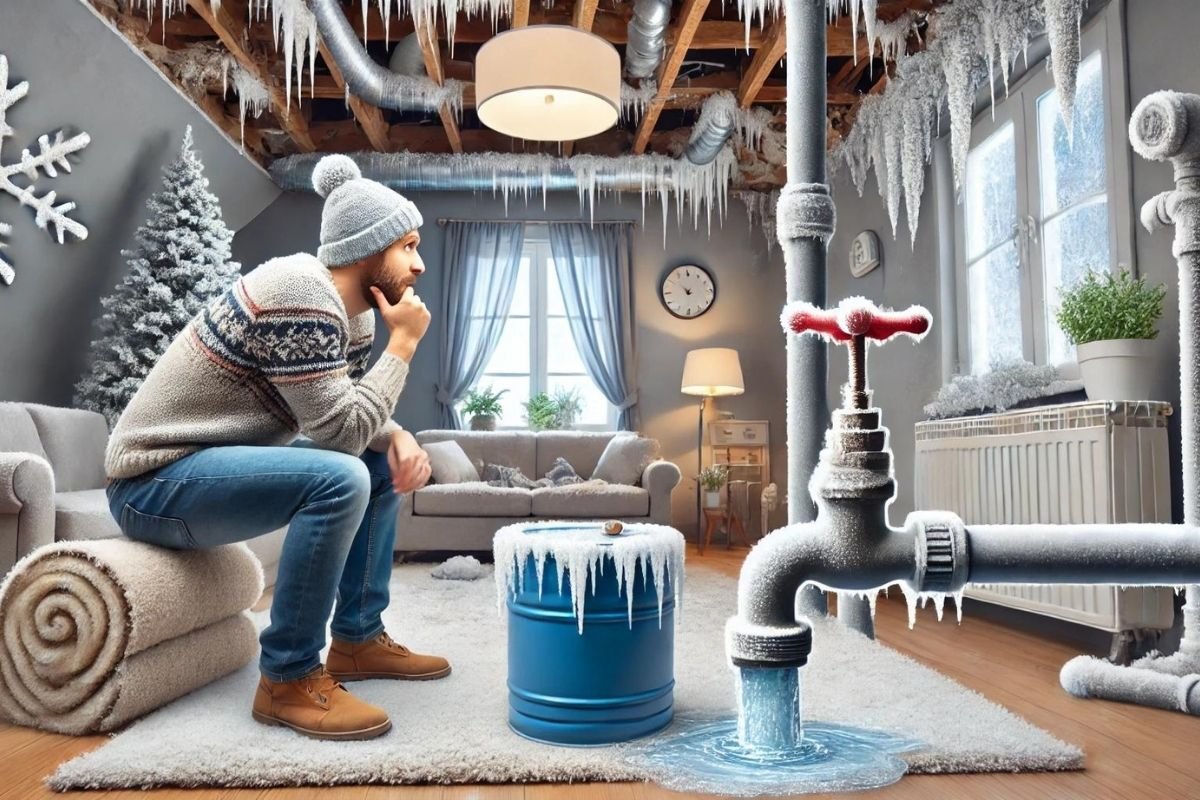Encountering an absence of hot water in your home following an episode of freezing weather can be something other than badly designed; it can flag huge issues with your pipes that need quick consideration. Assuming you’ve ended up in this cold dilemma, understanding the reason why this occurs and how to fix it is urgent. We will investigate the normal causes and arrangements when you find there’s no hot water in house in the wake of freezing weather, guaranteeing you’re not left in that frame of mind for a really long time.
Why Freezing Weather Influences Your Hot Water Supply?
At the point when temperatures decrease decisively, the water in your lines can freeze. This is especially evident in region of your home that aren’t all around protected, like storm cellars, lofts, and outside walls. Frozen pipes are something other than a transitory burden; they can prompt difficult issues like explodes and critical water harm.
Pipe Development and Contraction: Water grows as it freezes, coming down on the lines. This tension can cause breaks or explodes, yet regardless of whether it, the ice blockage can keep water from streaming, accordingly preventing hot water from arriving at your spigots.
Impact on Water Heaters: In the event that you have a tankless water radiator, it depends on running water to warm the framework. Frozen pipes stop this stream, meaning no hot water. Conventional water radiators can be impacted as well in the event that the virus water supply line is frozen, as they need water stream to really work.
Immediate Moves toward Take in the event that Your Hot Water Isn’t Working
Assuming you suspect that frozen lines are the justification behind your absence of hot water, there are quick advances you ought to take to moderate the issue and forestall further harm.
Inspect for Noticeable Damage: Cautiously take a look at any open lines for breaks or explodes. In the event that you find harm, it’s urgent to stop the primary water supply quickly to forestall flooding once the lines defrost.
Begin Defrosting Pipes: For pipes that are unblemished however frozen, you can begin the defrosting system by applying heat. This should be possible with a hair dryer, warming cushion, or towels absorbed hot water. Never utilize open flares as this can harm the lines or cause a fire.
Open Faucets: Open the hot and cold spigots marginally to alleviate pressure and permit water to stream once it starts to defrost. This can likewise assist with accelerating the defrosting system by moving water through the lines.
Preventive Measures to Safeguard Your Pipes in Winter
To forestall the bother and expected harm of frozen pipes from here on out, going to proactive lengths is fundamental, particularly in districts inclined to freezing temperatures.
Insulate Pipes: Appropriate protection of your home’s pipes is basic. Really focus on pipes in unheated regions and those on outside walls. Utilizing pipe protection sleeves or wrapping can give critical assurance against freezing.
Keep the Intensity On: Keeping your house warm during cold spells can keep the inside temperature from decreasing to where lines can freeze. It could build your warming bill, however it will save money on expensive fixes.
Seal Breaks and Openings: Inspect your home for any holes or drafts, especially close to plumbing. Fixing these openings can take care of keep cold air and warm air in, shielding your lines from freezing temperatures.
When to Call an Expert Plumber?
While a few preventive measures and minor defrosting can be Do-It-Yourself, there are times when it is important to call an expert handyman:
- Severe Line Damage: On the off chance that you have broad harm or numerous regions where lines have frozen, an expert can guarantee the maintenance is done securely and effectively.
- Recurrent Freezing: On the off chance that your lines regularly freeze regardless of going to preventive lengths, a handyman can evaluate your pipes framework and make proposals for an extremely durable arrangement, for example, rerouting pipes or extra insulation.
- Installation of New Fixtures: Consider having a handyman introduce particular items like ice resistant spigots or coordinated warming tapes around pipes for added insurance against freezing.
Experiencing no hot water in house subsequent to freezing weather is an obvious indicator that your home’s pipes needs prompt consideration. By figuring out the causes, making a quick move to resolve any prompt issues, and executing preventive measures, you can guarantee that your hot water supply stays continuous, no matter the way in which low the temperature decreases. Keep in mind, if all else fails, calling an expert is the most secure strategy to safeguard your home and solace.

